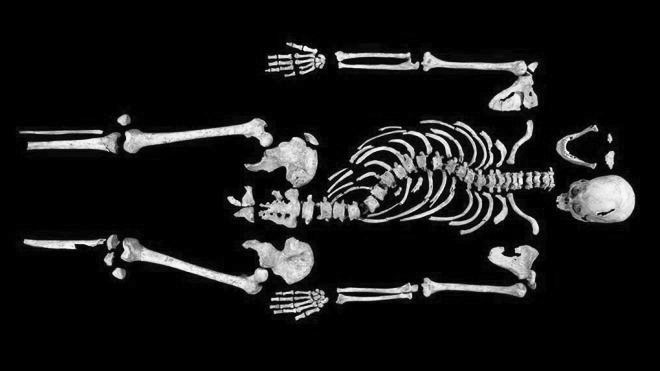The discovery of human remains in England has proved to be none other than royalty. In a recent excavation, the bones of England’s King Richard III were discovered in the fall back on Aug. 24, 2012. After several months of testing, the body was actually that of King Richard III.
The King’s bones were found in Leicester, England under a parking lot.
Although the body was found last year, it wasn’t until Monday, Feb. 4, that a team at Leicester University was able to prove through DNA testing that the discovered skeleton was proved to be King Richard III’s. Richard Taylor from Leicester University said, “We knew then, beyond reasonable doubt, that this was Richard III, we’re certain now, as certain as you can be of anything in life.”
The search crew began looking for Richard III’s body by locating the approximate whereabouts of the church in which his quick burial had taken place. The body’s location was noted by an ancient historian, John Rouse, who had recorded the location of the King’s body. His body was not discovered with anything that could have identified him as King Richard III. The body was found with wounds attributed to the battlefield. An arrow head was founded in his spine, and he had injuries to the head which were consistent to those of the time period. The spine also had a curvature to spine, scoliosis, which King Richard III was believed to have had. The bones discovered 500 years after the King’s unfortunate downfall. The King died in the Battle of Bosworth Field when Henry Tudor decided to take England for himself. The Tudors pushed Richard out and seized control after his death.
With this latest discovery of the body, questions are being raised now whether his character can be proven. Many people, especially Richard III Society, hope this recent discovery will shed some light on the King’s character. The King was believed to be a sensitive man who was actually concerned about the welfare of his loyal subjects. Philippa Langley, a member of the Richard III Society, said, “I think he wanted to be found, he was ready to be found, and we found him, and now we can begin to tell the true story of who he was.” Langley’s enthusiasm was the driving force behind the project. She herself raised a considerable amount of the money it cost to exhume his body and do the proper testing to prove it was Richard III’s body.
Now that the body was been found and exhumed, the next question is what do you do with the remains? Many believe, including Langley, who thinks his body deserves to be placed in Westminster Abbey in London with other British royalty. However, the body is now going to be buried in Leicester in the Anglican Cathedral. The cathedral itself is in close proximity to where his bones were recently found. Could this recent discovery push other scholars to further their search for other missing people of history?

